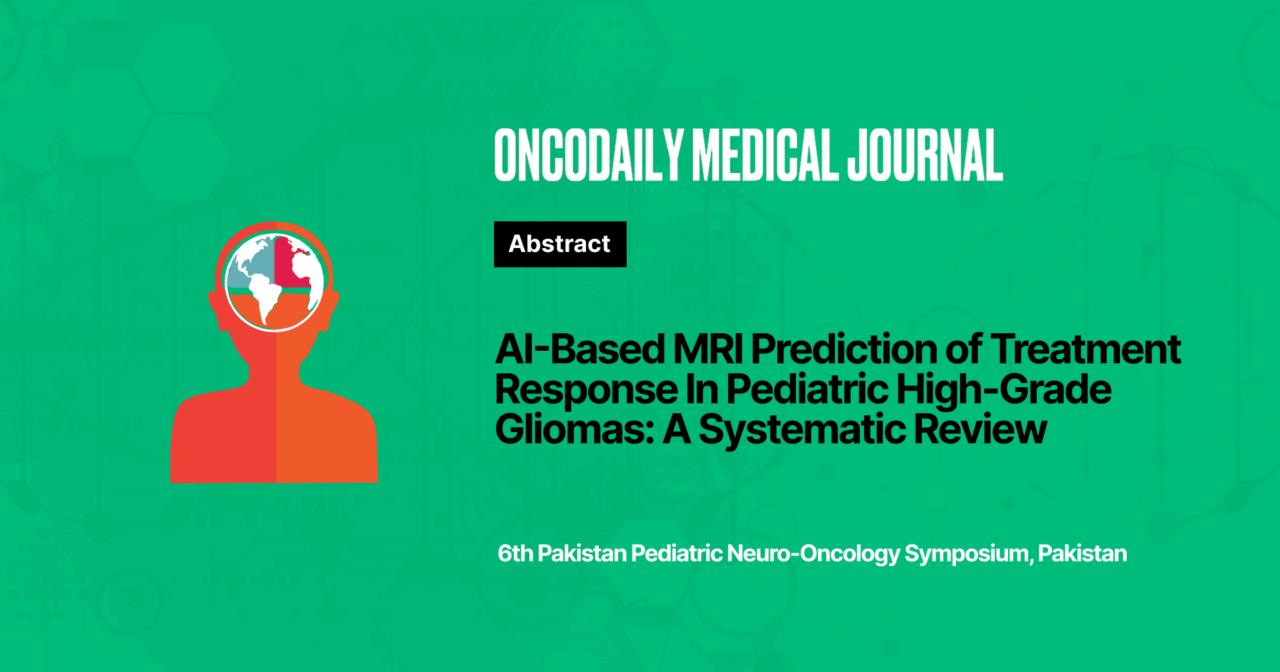AI-Based MRI Prediction of Treatment Response In Pediatric High-Grade Gliomas: A Systematic Review
Abstract
Introduction: Pediatric high-grade gliomas (pHGG), including diffuse intrinsic pontine gliomas (DIPG) and diffuse midline gliomas (DMG), are aggressive childhood brain tumors with poor outcomes. Conventional imaging biomarkers are limited and primarily qualitative. Artificial intelligence (AI) encompassing machine learning, deep learning, and radiomics has emerged as a promising tool to analyze pre-treatment MRI for prognosticating treatment response or survival.
Methodology: We conducted a PRISMA-compliant systematic review (PubMed, Embase, and others; through May 2025) of studies involving children (0-18 years) with pHGG, including DIPG/DMG, that used AI models based on pre-treatment MRI to predict outcomes (radiological response, progression-free survival, or overall survival). Two reviewers independently screened and extracted data on study design, imaging modality, AI methodology, and model performance. Risk of bias was assessed using the PROBAST tool.
Results: Six studies met inclusion criteria (total n=470). Four included DIPG/DMG broadly (Tam et al. 2021; Wagner et al. 2023; Liu et al. 2024; Yu et al. 2024), and two focused on DIPG (Chilaca-Rosas et al. 2023; Wawrzuta et al. 2024). Cohorts ranged from 12 to 177 patients. Most studies extracted radiomic features from MRI sequences (T1, T2, FLAIR), applied segmentation, and used machine learning models (e.g. LASSO Cox, random forest, logistic regression) to predict outcomes. Performance varied: concordance indices for OS prediction were around 0.68; AUC ranged from 0.77-0.91. FLAIR features were most predictive for short-term progression-free survival (C-index =0.87). AI models generally outperformed models based solely on clinical variables.
Conclusion: AI applied to pre-treatment MRI shows potential for noninvasive prognostication in pediatric HGG, especially DIPG/DMG. Current models report moderate-to-high predictive accuracy (C/AUC =0.7–0.9), but limitations include small, retrospective cohorts and inconsistent validation. Prospective, multi-center studies with standardized protocols are needed.
Conflict of Interest: None
Funding: None
Disclosure statement: None
License: This article is published under the terms of the Creative Commons Attribution 4.0 International License (CC BY 4.0).
© Hamna Ali, 2025. This license permits unrestricted use, distribution, and reproduction in any medium, provided the original author and source are credited.





